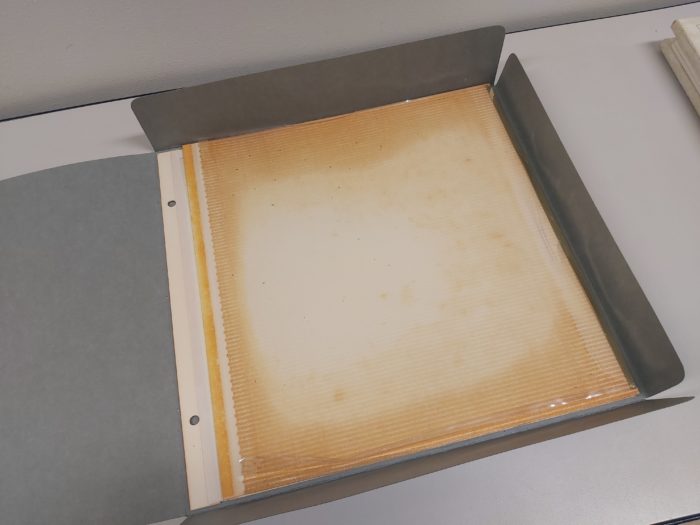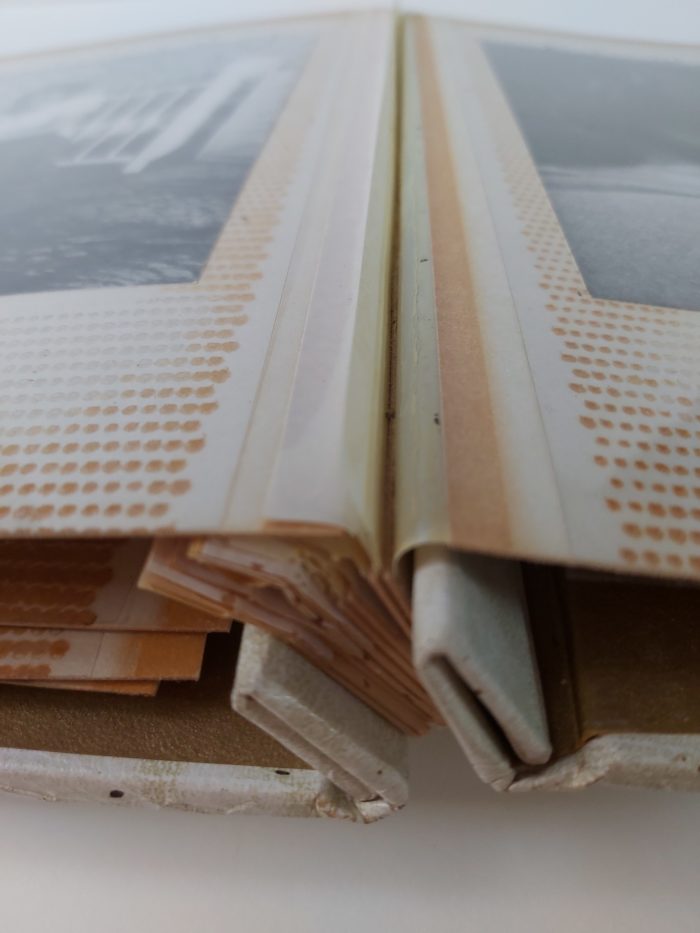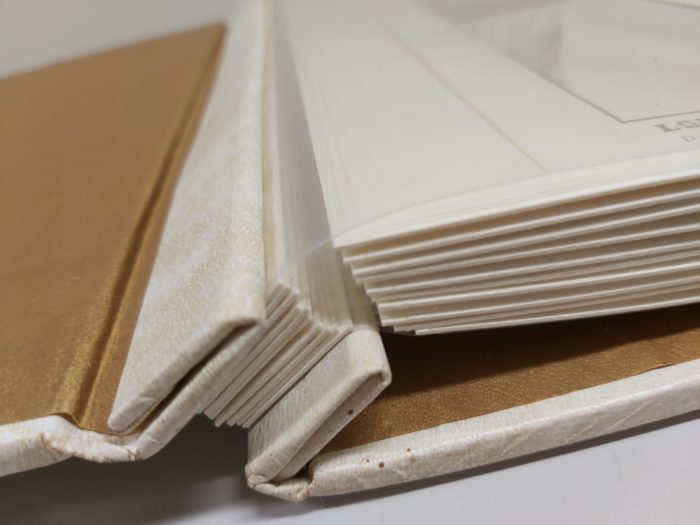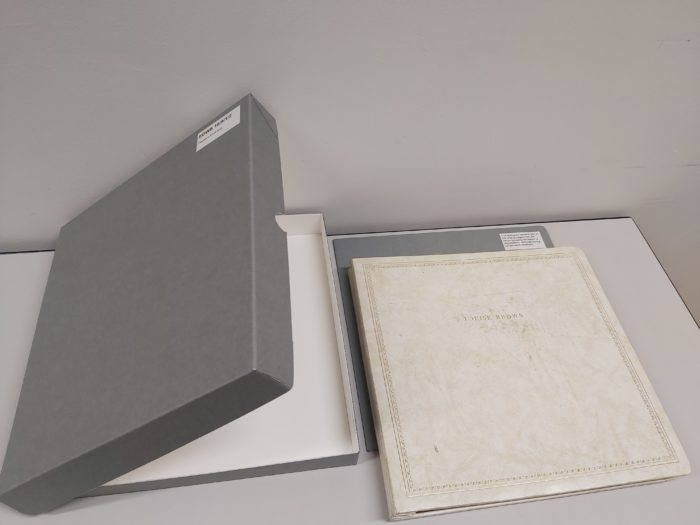Last year, we spent some time on the conservation of the recently acquired papers of Professor Sir Robert Edwards, following the detailed cataloguing of the collection.
One of the most appealing items we worked on was a photograph album produced by the Daily Mail for Bob Edwards to commemorate the birth of Louise Brown, the first IVF baby, in 1978. The album contains really charming photographs of the family, nurses and doctors before and immediately after the birth.
Typical of photo albums of that time (and sadly, still on sale today), it is a loose-leaf ‘self-seal’, ‘self-adhesive’ or ‘magnetic’ album constructed from some of the most low grade, unstable materials available. The pages are cardboard with lines of tacky adhesive on both sides to which the prints are applied and then a thin clear plastic film lays over them and also lightly adheres to the adhesive layer. The plastic coated ‘leather cloth’ covers have been decorated in gold with the wording ‘Louise Brown’.
The cardboard is degraded and the adhesive layer is very oxidised and desiccated – now brown and dry near the edges and at the front of the album. The plastic overlay is very brittle and tears readily when pulled away from page.

Fig. 1: Sample original page, with print removed, showing level of degradation and discolouration
In addition, many of the paper hinges between the binding stub and the page are detached due to adhesive failure and therefore pages are falling out

Fig. 2: Before conservation, showing the damage at the binding edge
On the back pages, there are dead ‘thunder flies’ on and under the plastic film and also around the screw posts and flaps in the covers.
Ironically, the photographic prints themselves are relatively very stable, being well processed developed-out black and white prints on fibre based paper (as opposed to ‘resin coated’ which is paper with plastic layers). In good conditions, these will remain well preserved. Unfortunately, the cardboard, adhesive layer and plastic overlays all threaten the chemical stability of the paper, gelatine and silver which make up the prints.
Therefore, it was decided that the pages should be re-made of stable archival materials and then rebound back into the original covers to preserve as much of the integrity of the item as possible.
The album was dis-bound by removing the screw posts and the prints removed mechanically, mainly by gently flexing the page away from the back of the print. This had to be done very slowly and carefully for some of the prints earlier in the album as these were more firmly attached and stained from the highly oxidised adhesive layer.
The covers were cleaned with a soft brush and dry cotton wool swabs.
Two of the original pages were kept as a sample, but all the pages were replaced with same-size pages made from a laminate of conservation grade alpha cellulose paper which had passed the Photographic Activity Test. The adhesive used in the lamination was a pure Japanese Shoufu wheat starch paste.
New overlays were made out of a thin 100% polyester film (known as melinex) and these were secured to the new pages and binding stubs with welds. Prints were placed onto the pages in the same order and arrangement as originally.
Holes were punched into the new pages allowing them to be bound back into the original covers with the original screw posts.

Fig. 3: This image shows the new pages bound into the original covers
The album and the samples of the original pages were housed together in a bespoke clamshell box constructed from archival board using a conservation adhesive.

Fig. 4: This shows the conserved album with it’s clamshell box
Sarah Lewery, Senior Conservator
Subscribe to Churchill Archives Centre News
Subscribe to the Churchill Archives News RSS feed:
